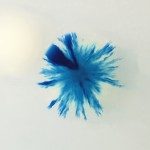Link to Pubmed [PMID] – 11724851
J. Clin. Microbiol. 2001 Dec;39(12):4396-403
We compared Bordetella pertussis isolates collected in France over the last 10 years, the vaccine strains used for more than 30 years, and isolates collected before the introduction of generalized vaccination. The analysis included serotyping, pulsed-field gel electrophoresis of chromosomal DNA after digestion with XbaI and SpeI, and sequencing of the pt S1 gene, encoding the S1 subunit of pertussis toxin, and the prn gene, encoding the adhesin pertactin. We found that the incidence of infection increases every 3 years. Ninety-five per cent of the isolates analyzed express type 3 fimbriae. Most of the isolates circulating since 1991, unlike the vaccinal strains, express a type A pertussis toxin and a type 2 pertactin. The isolates could be classified into five major groups by pulsed-field gel electrophoresis. Most of these groups correlated with the pertactin type expressed by the isolates. Pulsed-field gel electrophoresis is more discriminative than sequencing particular genes since it could differentiate isolates expressing type 2 pertactin into two subgroups: those circulating in 1993 to 1997 and those circulating in 1997 to 2001. This observation suggests that there has been continuous evolution of the B. pertussis population.

